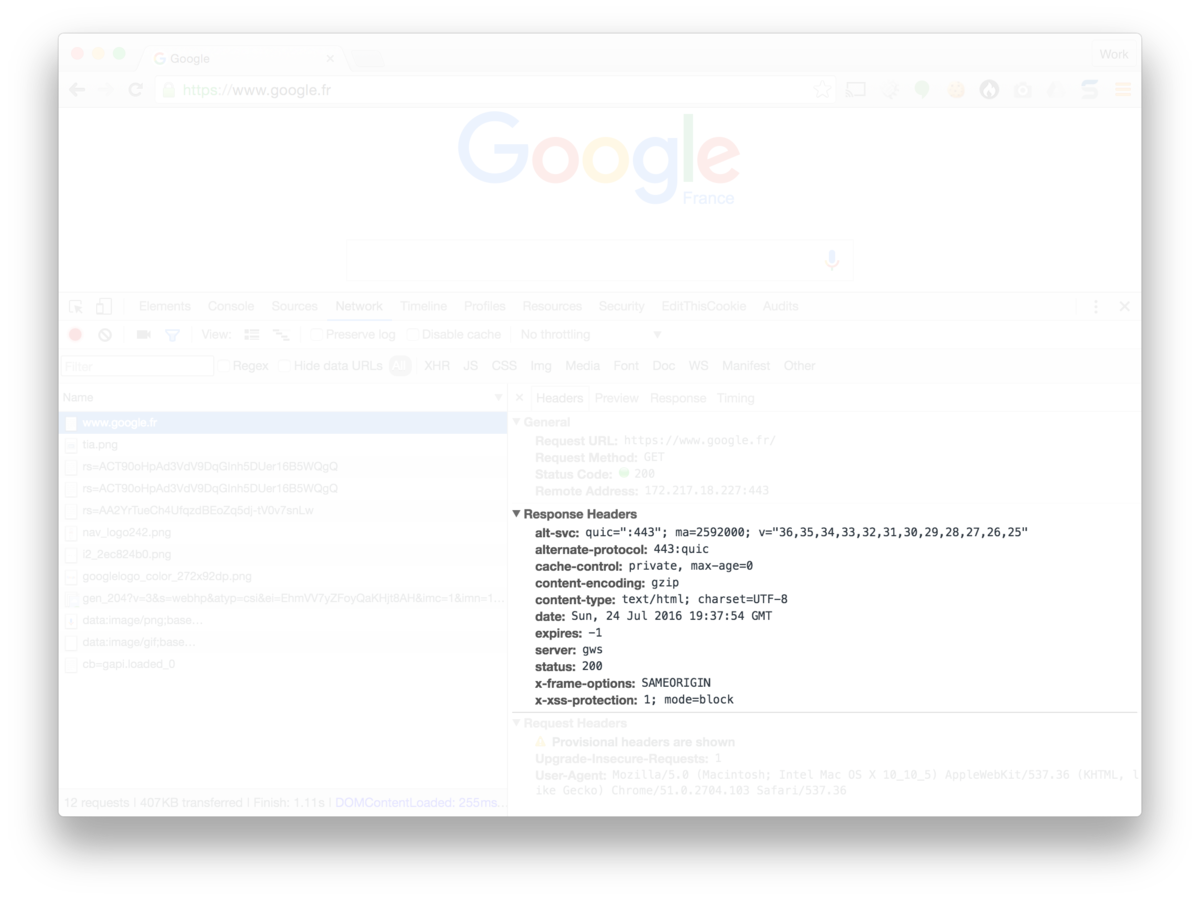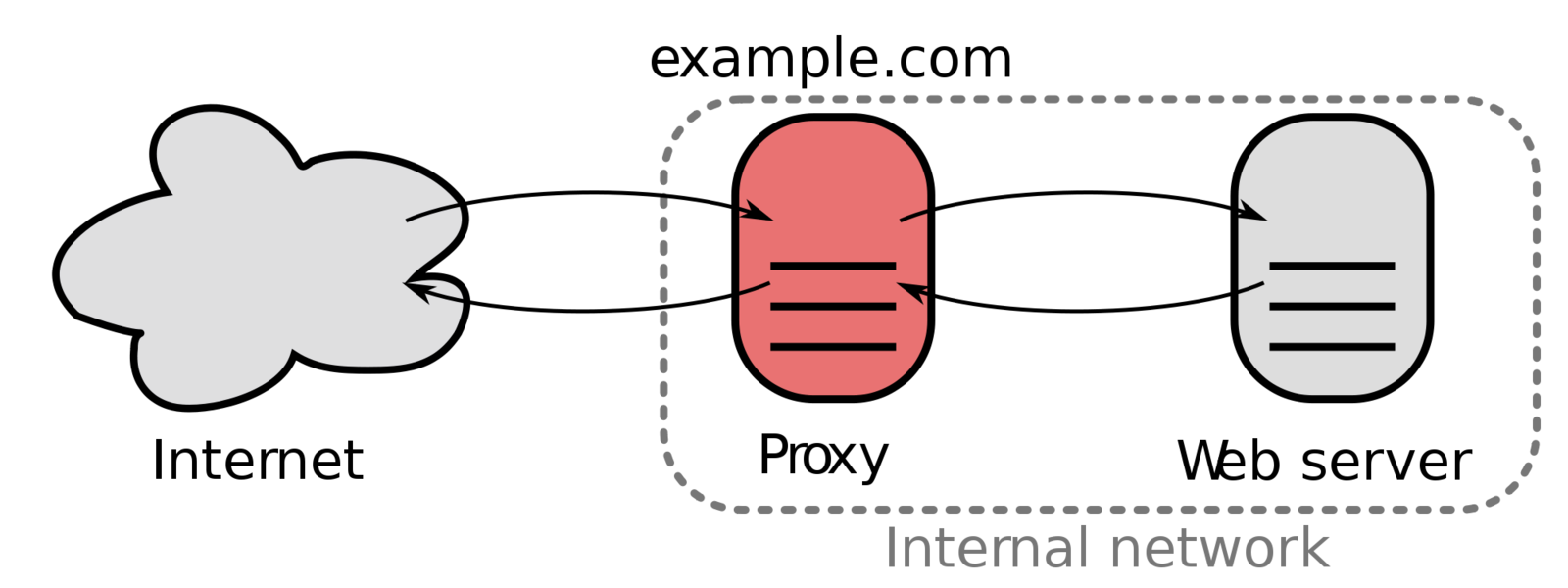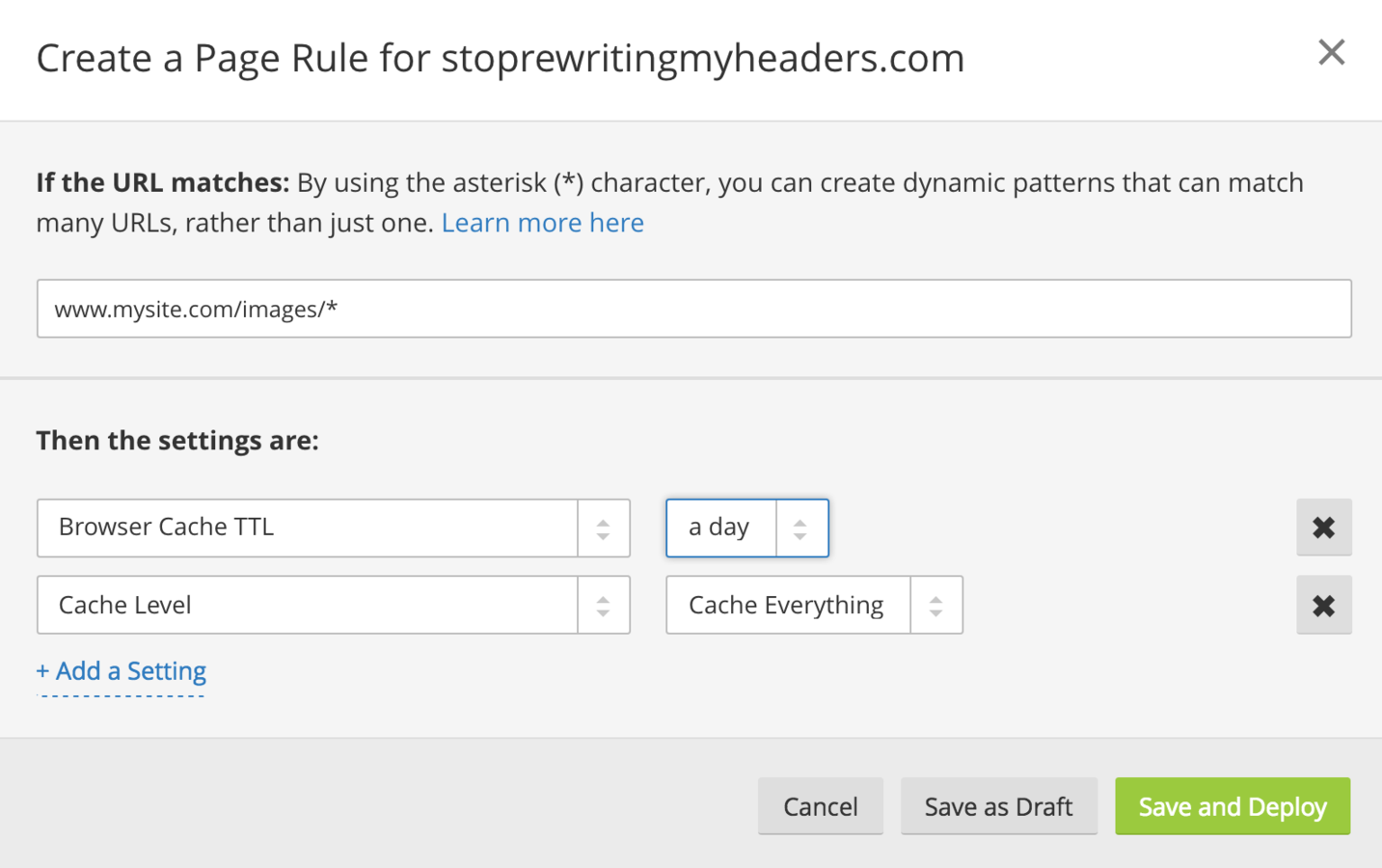#BehindAReverseProxy
Be proud of being lazy!

July 27th 2016 – viscaweb.com/meetings
First part:
What's HTTP?

#BehindAReverseProxy
#BehindAReverseProxy

#BehindAReverseProxy
What's HTTP?
HTTP functions as a request–response protocol in the client–server computing model (as said on Wikipedia).


#BehindAReverseProxy
What's HTTP?




#BehindAReverseProxy
What's HTTP?
Request Type
GET
HEAD
POST
OPTIONS
CONNECT
TRACE
PUT
PATCH
DELETE
GET
POST
Response Codes
418 I'm a teapot


#BehindAReverseProxy
What's HTTP?
Request Headers
Response Headers
Accept-Charset
Accept-Encoding
Accept-Language
Authorization
Cookie
Referer
User-Agent
X-Forwarded-For
etc..
Cache-Control
Content-Encoding
Etag
Expires
Location
Refresh
Set-Cookie
Status
Vary
etc..

#BehindAReverseProxy
What's HTTP?


#BehindAReverseProxy
Where does a reverse proxy stands?



#BehindAReverseProxy
Where does a reverse proxy stands?


A Reverse Proxy stands between your web server and the user.
It provides extra functionalities:
caching, security, load balancing, etc..
Second part:
Caching - how does it works?

#BehindAReverseProxy
#BehindAReverseProxy

#BehindAReverseProxy
Preamble
We'll review how the headers describe
a caching strategy.
This is JUST about HTTP.
The Reverse Proxy understands those headers...
as you web browser does.

#BehindAReverseProxy
Playing with Privacy
Public


Private
<?php
header("Cache-Control: public");<?php
header("Cache-Control: private");Public means that caching this page is allowed and safe.
A Private response will not be cached by any (decent) proxy.

#BehindAReverseProxy
Playing with Expiration



Liga, 04/12, 8PM





User
Reverse Proxy
Web Server
Generate Hash
$ curl -I 'http://marcadores.com/futbol/spain/liga/fc-barcelona-madrid'
GET /futbol/spain/liga/fc-barcelona-madrid HTTP/1.1
Accept: */*
Accept-Encoding: gzip, deflate
Connection: keep-alive
HTTP/1.1 200 OK
Cache-Control: public
Connection: Keep-Alive
Content-Type: text/html; charset=UTF-8
Date: Mon, 25 Jul 2016 19:31:04 GMT
Expires: Sun, 04 Dec 2016 20:00:00 +0200
Server: Apache/2.2.31 (Unix) DAV/2 PHP/5.6.18 mod_ssl/2.2.31 OpenSSL/1.0.2h
X-Powered-By: PHP/5.6.18<?php
header("Cache-Control: public");
$expires = new \DateTime('2016-12-04 20:00:00', new \DateTimeZone('Europe/Madrid'));
header("Expires: " . $expires->format('r'));
#BehindAReverseProxy
Playing with Expiration



Liga, 04/12, 8PM






User
Reverse Proxy
Web Server
Generate Hash
✔ Save this page with the given expiration date: 2016-12-04 18:00:00 UTC

#BehindAReverseProxy
Playing with Expiration



Liga, 04/12, 8PM




User
Reverse Proxy
Web Server
Generate Hash


#BehindAReverseProxy





User
Reverse Proxy
Web Server
Generate Hash
$ curl -I 'http://marcadores.com/'
GET / HTTP/1.1
Accept: */*
Accept-Encoding: gzip, deflate
Connection: keep-alive
HTTP/1.1 200 OK
Cache-Control: public, max-age=60
Connection: Keep-Alive
Content-Type: text/html; charset=UTF-8
Date: Mon, 25 Jul 2016 19:31:04 GMT
Server: Apache/2.2.31 (Unix) DAV/2 PHP/5.6.18 mod_ssl/2.2.31 OpenSSL/1.0.2h
X-Powered-By: PHP/5.6.18<?php
header("Cache-Control: public, max-age=60");Playing with Max-Age

#BehindAReverseProxy






User
Reverse Proxy
Web Server
Generate Hash
Playing with Max-Age
✔ Save this page with the given max-age: 60s

✔ Cached for 60s

#BehindAReverseProxy





User
Reverse Proxy
Web Server
Generate Hash
$ curl -I 'http://marcadores.com/'
GET / HTTP/1.1
Accept: */*
Accept-Encoding: gzip, deflate
Connection: keep-alive
HTTP/1.1 200 OK
Cache-Control: public
Etag: version1
Connection: Keep-Alive
Content-Type: text/html; charset=UTF-8
Date: Mon, 25 Jul 2016 19:31:04 GMT
Server: Apache/2.2.31 (Unix) DAV/2 PHP/5.6.18 mod_ssl/2.2.31 OpenSSL/1.0.2h
X-Powered-By: PHP/5.6.18<?php
header("Cache-Control: public");
$version = '1';
header("Etag: version{$version}");Playing with Etag

#BehindAReverseProxy






User
Reverse Proxy
Web Server
Generate Hash
Playing with Etag

#BehindAReverseProxy






User
Reverse Proxy
Web Server
Generate Hash
Playing with Etag
➜ Is there an Etag in the Request?
➜ Is this Etag different from the one we know?

#BehindAReverseProxy
A flexible app. with invalidation
(the concept)



Reverse Proxy
What's invalidation? It ask your reverse proxy to remove from their storage one or many objects (Response).
How? By making a special method request, using a specific method: PURGE, DELETE, BAN.
$ curl -X PURGE http://www.marcadores.com/liga
✔ PurgedWho? For Varnish, you usually allow only a given list of IPs. Each kind of server has its own implementation. SDK will go through a classic auth (CloudFlare).

#BehindAReverseProxy
A flexible app. with invalidation
(using patterns)
How does it works?
$ curl -X BAN http://www.marcadores.com/ 'X-Url: /futbol/2016-03-07/*'
✔ BannedFully supported by:
Supported except regular exp:




#BehindAReverseProxy
A flexible app. with invalidation
(using tagging)

Let's imagine:
➜ Your managing the caching strategy for GitHub.com
➜ Each blocks is called a widget
➜ Each widget must be cached and always up to date
➜ A user logs-in and change his name...

#BehindAReverseProxy
A flexible app. with invalidation
(using tagging)
You must invalidate the following URL: github.com/jonashaouzi


#BehindAReverseProxy
A flexible app. with invalidation
(using tagging)
And... all the repositories graph. related to this user:


#BehindAReverseProxy
A flexible app. with invalidation
(using tagging)
How to solve this problem?
1. Tag your pages
Imagining we have 3 pages related with this user:
1. His profile page (github.com/jonashaouzi)
2. His first repository (github.com/orga/repo)
3. His second repository (github.com/orga/repo2)
Simply tag them as: user123
<?php
header('Cache-Tag: user_page, user123, charts');$ curl -X BAN http://www.marcadores.com
\ 'Cache-Tag: user123'
✔ Banned2. Invalidating looks way easier now:
Fully supported by:



#BehindAReverseProxy
Don't let them pay for it!





User
Reverse Proxy
Web Server



#BehindAReverseProxy
Don't let them pay for it!




User
Reverse Proxy
Web Server


Third part:
Reverse Proxies

#BehindAReverseProxy
#BehindAReverseProxy

#BehindAReverseProxy

This engine is used by many top world's websites:




#8
#121
#155
#3
... and 1330 of the first 10 000 world's websites.

#BehindAReverseProxy

Varnish is an HTTP accelerator:
➜ Written in C.. which make it fast
➜ Own language (VCL)
➜ Made for scaling
➜ Supports load balancing
➜ Supports compression
➜ Supports all kinds of invalidation
sub vcl_recv {
# Called at the beginning of a request, after the complete request has been received and parsed.
# Its purpose is to decide whether or not to serve the request, how to do it, and, if applicable,
# which backend to use.
# also used to modify the request
set req.backend_hint = vdir.backend(); # send all traffic to the vdir director
# Normalize the header, remove the port (in case you're testing this on various TCP ports)
set req.http.Host = regsub(req.http.Host, ":[0-9]+", "");
# Remove the proxy header (see https://httpoxy.org/#mitigate-varnish)
unset req.http.proxy;
# Normalize the query arguments
set req.url = std.querysort(req.url);

#BehindAReverseProxy

Nginx is and a HTTP Server, and a Reverse Proxy Server
➜ Written in C.. which make it fast
➜ Known to be more efficient (less memory, faster) than Apache
➜ Supports load balancing
➜ Supports compression
➜ Nginx was found to be the second most widely used web server across all "active" sites (October 2015)
➜ 3,779 websites of the 10,000 uses it

Internal
Reverse Proxy
#BehindAReverseProxy

➜ Written in PHP
➜ Not recommended for high traffic websites (as the main RP)
➜ Useful for local testing
<?php
// web/app.php
use Symfony\Component\HttpFoundation\Request;
// ...
$kernel = new AppKernel('prod', false);
$kernel->loadClassCache();
// wrap the default AppKernel with the AppCache one
$kernel = new AppCache($kernel);
$request = Request::createFromGlobals();
$response = $kernel->handle($request);
$response->send();
$kernel->terminate($request, $response);

CDNs
#BehindAReverseProxy







CDNs
#BehindAReverseProxy

Good to know... many CDNs allow you to overwrite caching rules.
Fourth part:
Thoughts and notes

#BehindAReverseProxy
#BehindAReverseProxy

Symfony SubRequests
#BehindAReverseProxy
Symfony can easily render the content of a given Controller into any part of the page. This is call a SubRequest.
By default, Symfony render this SubRequest transparently and inside the same PHP thread.


// app/config/config.yml
framework:
esi: {
enabled: true
}
Symfony SubRequests
#BehindAReverseProxy


FOS HTTP Bundle
#BehindAReverseProxy
Provides easy PHP integration with Symfony of:
➜ Global caching rules
➜ Invalidation
➜ Tagging
➜ User Context
➜ Testing

Vary

The vary can be understand as if it is a "Context".
Let's imagine this scenario:
➜ Your website offers a full and enriched mobile version, and a desktop version, using the exact same URL.
➜ So far, this is working perfectly. You detect the user-agent and display, accordingly, the mobile or desktop version.
You decide to integrate a caching system on top of the website.
➜ A feedback raises your mail box: using its phone, the user got the desktop version. How it that possible?
➜ Your reverse proxy has cached the page, and because the user who went on the page for the first time was on his computer, all people now get the desktop version. Whether they're on mobile or not.
#BehindAReverseProxy
Vary

if (req.http.User-Agent ~ "(Mobile|Android|iPhone|iPad)") {
set req.http.User-Agent = "mobile";
} else {
set req.http.User-Agent = "desktop";
}
Works for:
➜ AB Testing ➜ User Agent
➜ Encoding ➜ Timezone
➜ etc..
The vary can be understand as if it is a "Context".
$ curl -v 'http://www.marcadores.com'
[...]
Vary: User-Agent
[...]#BehindAReverseProxy
Scalability





Reverse
Proxy





Web
Server
Users
A normal web server structure: 2 RP, 2 Web Servers
#BehindAReverseProxy
Scalability





Reverse
Proxy


Web
Server
Users
A normal web server structure: 8 RP, 2 Web Servers







Works only if the hit ratio is high
Cost much lower than if scaling the Web Server
#BehindAReverseProxy
Security



Reverse
Proxy

Web
Server
Users
A Reverse Proxy can filter the request




acl forbidden {
"192.168.168.0"/24;
"10.10.10.0"/24;
}
sub vcl_recv {
# Block access from these hosts
if (client.ip ~ forbidden) {
error 403 "Forbidden";
}
return (lookup);
}

#BehindAReverseProxy
PSR7

php-fig.org/psr/psr-7
New interfaces:
➜ MessageInterface
➜ RequestInterface extends MessageInterface
➜ ResponseInterface extends MessageInterface
➜ ServerRequestInterface extends RequestInterface
➜ StreamInterface
➜ UploadedFileInterface
➜ UriInterface
✔ 19th May 2016 RFC accepted
✔ Available in Symfony >= 2.7
#BehindAReverseProxy
And more...

To learn more about this topic and train, I'm suggesting...
Katas:
➜ Create your own reverse proxy
➜ Implementing a complex caching strategy
➜ Testing invalidating and warming up
Meetings:
➜ Varnish 4 - what's new?
➜ Caching and member area
#BehindAReverseProxy
Links (1/3)
HTTP by Wikipedia
https://es.wikipedia.org/wiki/Hypertext_Transfer_Protocol
HTTP headers list
https://es.wikipedia.org/wiki/List_of_HTTP_header_fields
HTTP codes list
https://es.wikipedia.org/wiki/List_of_HTTP_status_codes
A reverse proxy by Wikipedia
https://es.wikipedia.org/wiki/Reverse_proxy

#BehindAReverseProxy
Links (2/3)
How the HTTP caching header works?
https://developers.google.com/web/fundamentals/performance/optimizing-content-efficiency/http-caching
Varnish
https://varnish-cache.org/intro/index.html#intro
Nginx
https://www.nginx.com/
Symfony Reverse Proxy
http://symfony.com/doc/current/book/http_cache.html#symfony-reverse-proxy

#BehindAReverseProxy
Links (3/3)
Symfony SubRequests
http://symfony.com/doc/current/components/http_kernel/introduction.html
FOS HTTP Bundle
https://github.com/FriendsOfSymfony/FOSHttpCacheBundle
Understanding the Vary header
https://www.fastly.com/blog/best-practices-for-using-the-vary-header
Stats about Varnish usage
http://trends.builtwith.com/Web-Server/Varnish
Stats about Nginx usage
http://trends.builtwith.com/Web-Server/nginx

#BehindAReverseProxy

May 27th 2016 – viscaweb.com/meetings

by

#BehindAReverseProxy
Be proud of being lazy!